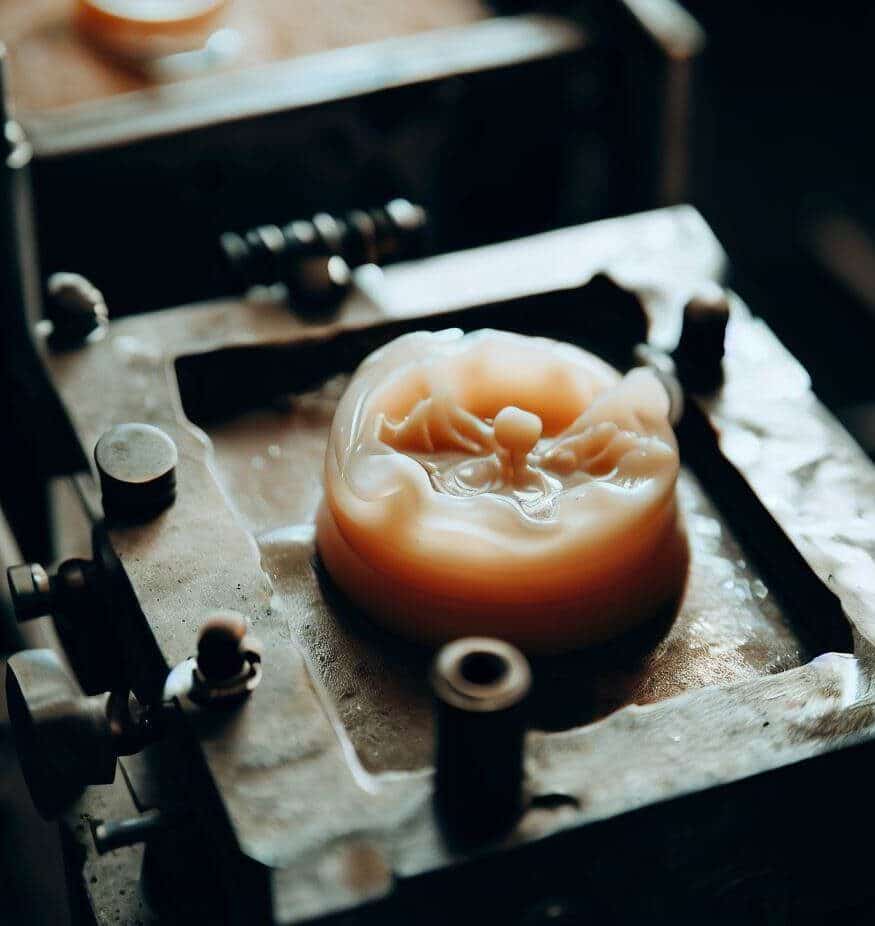Lost-wax casting
Lost-wax casting is used in jewelry-making to create precise and detailed metal pieces using wax and heat.
Also known as lost-wax casting, it is widely used in jewelry-making to create precise and detailed metal pieces. In this process, a wax model of the desired piece is created. Then, the wax model is placed in a mold and heated to remove the wax. Next, the molten metal is poured into the mold, and once cooled, the jewelry piece is extracted.
Basic steps of lost-wax casting:
A provisional wax model is crafted, following the design conceived by the artist. The wax can be easily molded, and intricate details can be added or removed.
- The wax model is surrounded by a refractory material layer, such as clay or plaster, which solidifies to form the mold. Small holes are left for the wax to escape and the molten metal to enter.
- The mold is heated in an oven, causing the wax to melt and flow out through the holes, leaving a cavity with the exact shape of the model. Hence the name "lost-wax."
- The molten metal is injected into the cavity of the mold, taking the precise form of the model. The metal used can be copper, bronze, gold, or other materials.
- The metal is allowed to cool, and then the mold is broken to extract the metal figure. The final finishing touches are added, such as polishing, chiseling, or patination of the surface.
This technique allows great freedom in designing the desired shapes, and it has been used to manufacture ornamental objects such as jewelry, statues, masks, and more.
Making the wax for this technique:
To make the wax for this technique, materials like beeswax, paraffin, polymer clay, or other malleable substances that can be easily molded are used.
Wax for replicas
Silicone or rubber molds can also be used to reproduce an original metal piece and obtain wax replicas through injection. The wax must have an appropriate thickness to prevent it from breaking during demolding or cracking during heating.
History of lost-wax casting
Lost-wax casting is a metallurgical technique used to obtain metal figures, typically in bronze and gold, by creating a mold from a prototype modeled in wax or another material.
This technique was developed independently and simultaneously in different regions of the world, such as Mesopotamia, India, China, Mesoamerica, and the Andes, from the 3rd millennium BCE to the 16th century CE. Each culture gave its own style and purpose to the metal objects created with this technique, including jewelry, ornaments, utensils, weapons, or religious sculptures. In America, it seems to have originated in Colombia around 1000 BCE.
The Florentine Codex, a 16th-century document that records the history and culture of the Aztecs, contains illustrations depicting the lost-wax casting process in Mesoamerica. Indigenous painters represented the various stages of metal object production, from raw material preparation to the final finish.
In Japan, the lost-wax casting technique is known as rokushō and dates back to the Yayoi period around 200 BCE. The most famous piece made with this technique is the bronze statue of Buddha in the Todaiji temple in Nara, which stands over 15 meters tall and weighs more than 500 tons.


Sandra Sanchez
Sandra is passionate about jewelry and interior design. She graduated in interior design from Universidad Taller 5 in Colombia and has completed several courses and postgraduate studies in Jewelry in Barcelona and Madrid, Spain. She combines her work as a jeweler and interior designer with teaching.
